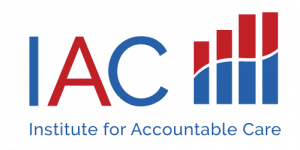DATA
The Institute for Accountable Care provides data and analysis derived from Medicare claims data to provide insight into national and regional spending, utilization and quality trends to inform public policy and support ACO decision making.
Opportunities for Collaboration Between ACOs and Geriatric Emergency Departments
Geriatric Emergency Departments (GEDs) are special units embedded within tradition emergency departments that are designed to improve patient experience and minimize potential harms that can occur among vulnerable older adults in the fast-paced ED environment. GEDs modify their physical environment to improve the comfort and safety of older patients with diminished cognitive function, hearing loss, and poor mobility. GED staff are trained in geriatrics and have processes in place to prepare older patients for a successful transition home after an ED visit. There are now more than 300 accredited GEDs across the US.
GED goals for patient care are closely aligned with accountable care organizations. Both aim to reduce preventable hospitalizations, transition patients to lower-cost care settings when appropriate and coordinate supportive services for patients with complex needs. In 2022, more than 185 ACOs or Direct Contracting Entities (DCEs) had at least 1,000 patient visits in a GED. This creates natural opportunities for ACOs to collaborate with GEDs to improve care for older Americans.
Clickhere to download a spreadsheet with a complete list of GED utilization by ACO and hospital.
Analysis of the Impact of Using Spending During the COVID-19 Pandemic (2020) to Set MSSP Benchmarks
In 2020 there was substantial geographic variation in the rate of growth in Medicare spending per beneficiary due to geographic differences in the severity of the COVID pandemic, and to varying state and local policies affecting business activity. Some ACOs have expressed concern that including 2020 as a “benchmark year” for ACOs entering new agreement periods in 2022 could lower the resulting benchmarks, which would then be in place for a five-year agreement period. We calculated two sets of historical benchmarks for 142 MSSP ACOs that will enter new agreement periods in 2022. Our analysis modeled: 1) Current policy with benchmarks based on historical spending in 2018 -2020; versus 2) An alternative policy of benchmarks based on 2017 – 2019 spending trended forward to 2020. Our analysis found that 45 percent of the ACOs would benefit with higher benchmarks under the alternative policy, while 55 percent of ACOs would have higher benchmarks under current CMS policy. A more detailed summary of the analysis is available here.
Variation in Out-Of-Network Utilization in Medicare ACOs
Effective referral management is an important ACO competency. Referring patients to affiliated ACO clinicians helps ensure clinicians have access to the patient’s most recent clinical information, facilitates timely handoffs across care teams and reduces duplicative or unnecessary services. Managing care within the ACO provider network has the potential to improve performance in both value-based and traditional fee-for-service contracts. There is substantial variation in out-of-network utilization for both primary care and specialist services. Our analysis of ACO out-of-network care for Medicare beneficiaries is available here.
Recent Trends in Medicare Telehealth Utilization
Monthly Medicare telehealth utilization peaked in April 2020 at 204 telehealth visits per 1,000 and gradually declined through November 2020. Telehealth utilization was substantially higher for high-need, high-cost beneficiaries peaking at 403 telehealth visits per 1,000 in May but has also declined over time. Across Medicare ACOs, telehealth rates ranged from few than 50 visits per 1,000 to more than 600 visits per 1,000. More detailed information is available here.
If you would like more detailed information about the analyses shown here or would like your own custom analysis please contact the Institute at analytics@institute4ac.org

